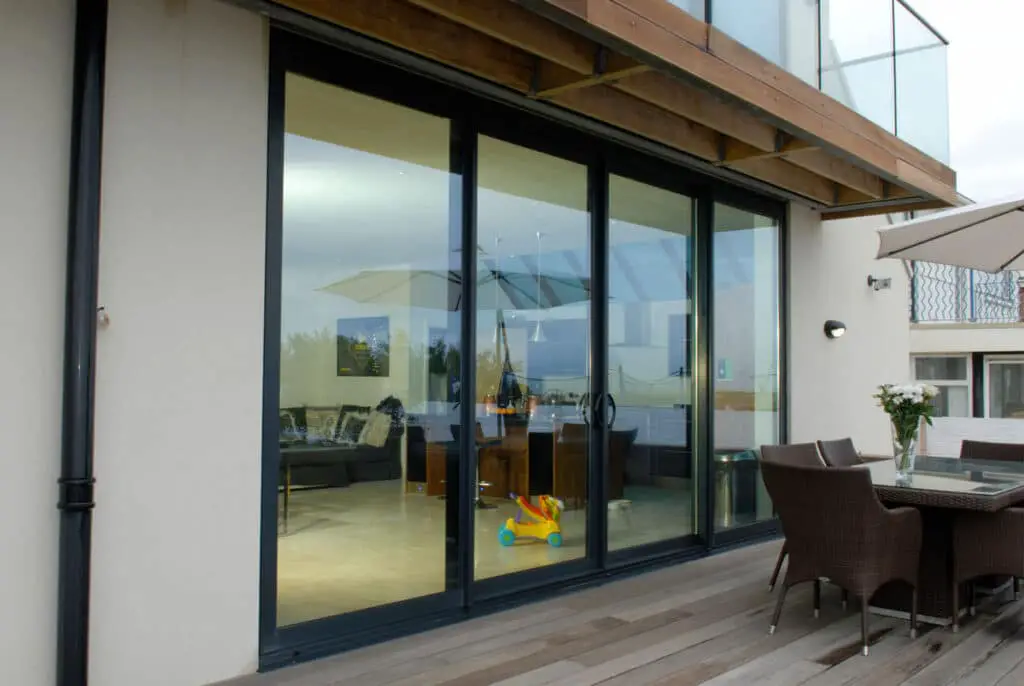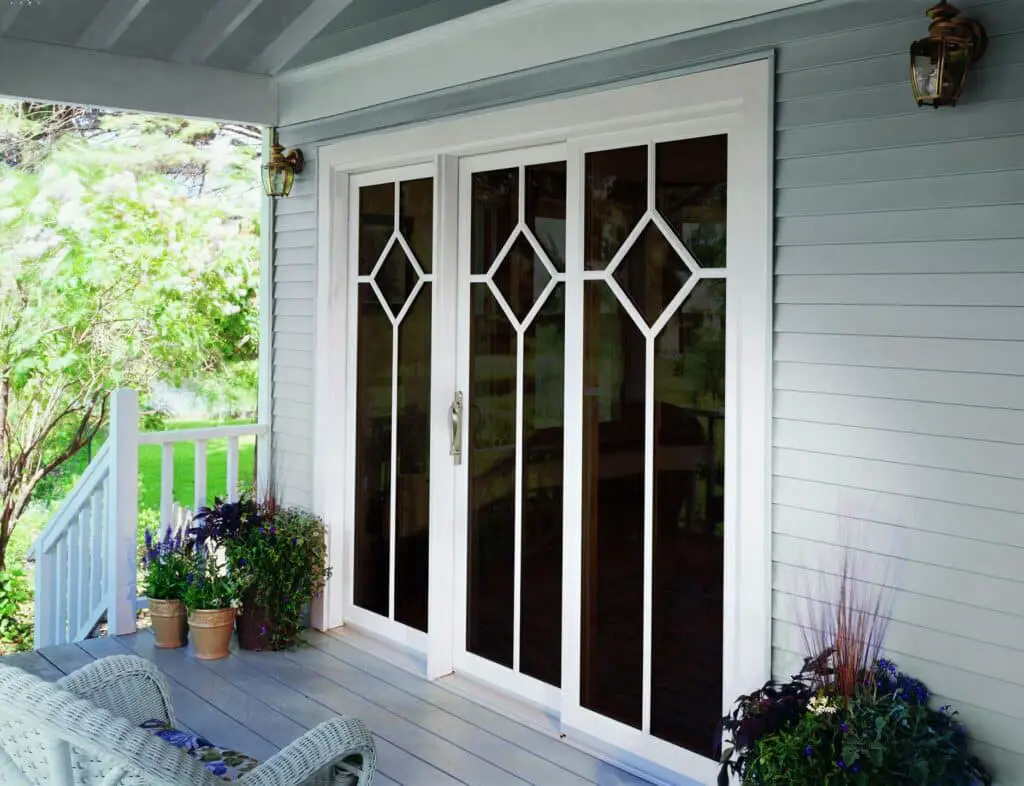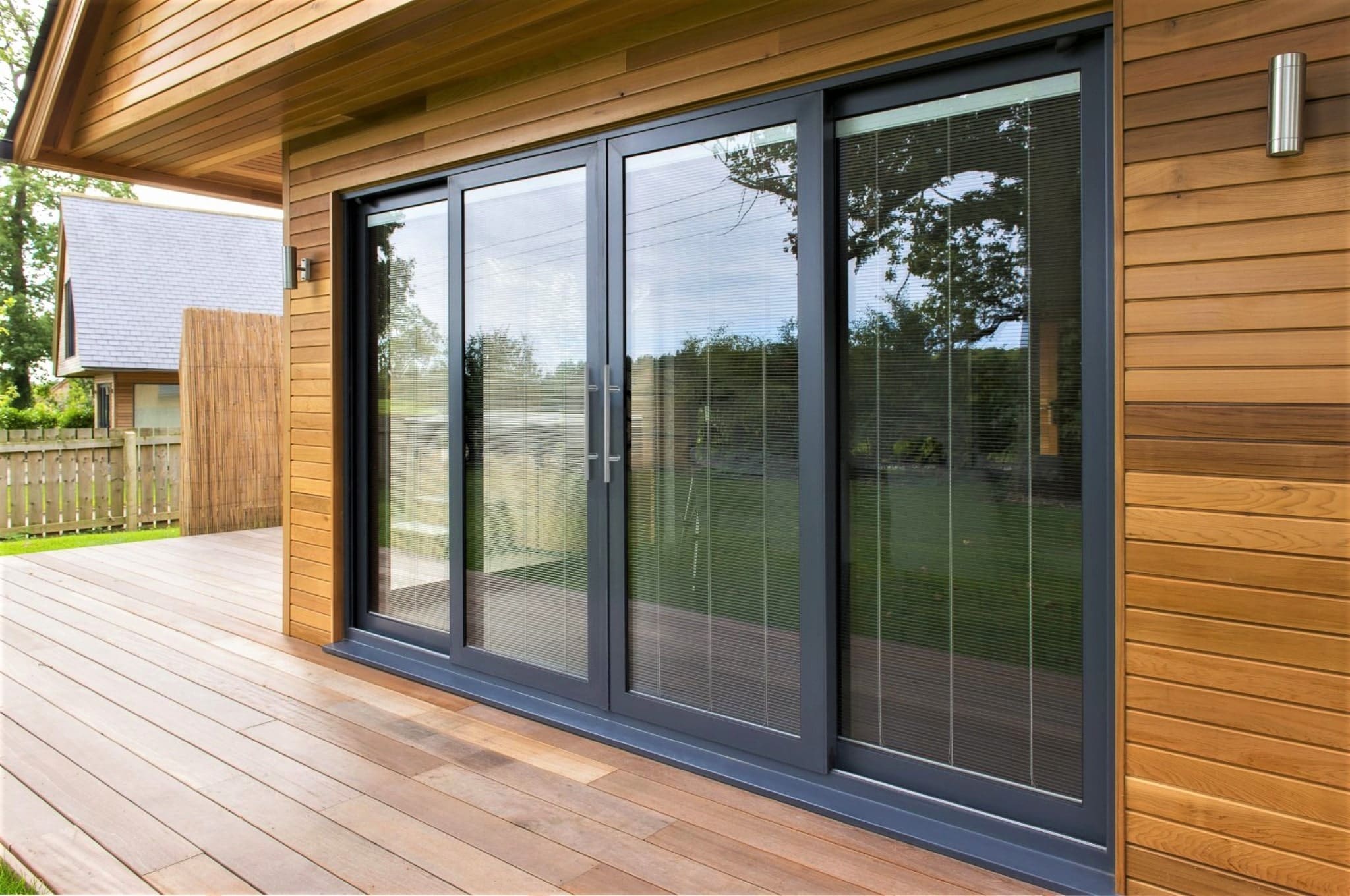How To Adjust Sliding Patio Door
Introduction
How To Adjust Sliding Patio Door: With your sliding patio door, such as difficulty sliding, uneven gaps, or air leaks. Understanding the root causes of these issues will enable you to target the adjustments effectively. Adjusting your sliding patio door. This will include adjusting the rollers or tracks, ensuring proper alignment, and checking for any damaged or worn-out components that may need replacement. Regular maintenance not only saves you money on potential repairs but also keeps your door functioning smoothly and looking its best.
Safety is of paramount importance throughout this process, so we will emphasize safety precautions to take while adjusting the door. Working with heavy doors and hardware can pose risks, but with the right guidance, you can protect yourself and others while completing flagstone patio the adjustments. Additionally, we will provide useful maintenance tips to help prolong the life of your sliding patio door and prevent future issues.
Furthermore, we will address common questions and troubleshooting tips for specific scenarios that you might encounter during the adjustment process. From dealing with rusted hardware to realigning misaligned doors, we’ve got you covered with practical solutions. By the end of this guide, you will have the knowledge and skills necessary to adjust your sliding patio door like a pro. Whether you’re a seasoned DIY enthusiast or just starting to explore home maintenance, our goal is to empower you with the confidence to tackle this task effectively and efficiently.

Can patio doors be adjusted?
All patio doors wear out and become hard to close, drag, and allow in drafts. Don’t worry—all patio doors can be changed and repositioned to operate again.
It’s important to recognize patio door adjustment indicators before starting the operation. The door may drag or stick down the track, open or close poorly, have unequal gaps between the door and frame, or leak air that causes drafts.
Homeowners can do small repairs themselves. Most patio sliding doors include adjustable bottom rollers for smooth tracking. Adjust the rollers with a screwdriver or Allen wrench to level the door.
Over time, dirt, debris, and small objects can accumulate in the tracks, hindering the smooth movement of the patio door. Cleaning the tracks and ensuring they are free from obstructions can significantly improve the door’s performance.
Misaligned tracks can cause the door to wobble or jam while opening or closing. Adjusting the tracks’ position with the help of shims or professional expertise can help resolve this issue.
While some adjustments are simple enough for homeowners to handle, more complex issues may require professional intervention. Complicated problems like warped frames, damaged rollers, or bent tracks might need specialized tools and knowledge to fix properly. Hiring a skilled technician ensures that your patio door is adjusted correctly and can save you from potential costly mistakes.
Do all sliding doors have adjustment screws?
Every standard sliding glass door has adjustable rollers that help it slide back and forth within the track. On the bottom portion of your sliding glass door, you should see a small hole on each side of the door. These holes hide the adjustment screw for the coordinating rollers.
Many sliding patio doors are equipped with rollers at the bottom, which glide along a track to facilitate smooth movement. These doors often have adjustable rollers with screws that can be accessed from either the inside or the outside of the door frame. Homeowners can use a screwdriver or an Allen wrench to adjust these screws, raising or lowering the rollers to achieve the desired height and alignment. This adjustment helps ensure that the door glides effortlessly and remains level with the frame.
Sliding barn doors have gained popularity in both interior and exterior applications. While some barn doors might have adjustable components, they often operate on a flat track system without traditional rollers. Adjustments for barn doors may involve repositioning the door on the track or adding spacers to achieve the desired fit.
Pocket doors slide into a concealed pocket within the wall, saving space when opened. Traditional pocket doors are not as easily adjustable as sliding patio doors with rollers. However, some modern pocket door systems come with adjustable features that allow minor adjustments to ensure the door operates smoothly.
Sliding closet doors are commonly found in bedrooms and storage areas. The hardware for these doors may or may not have adjustment screws. Some sliding closet doors may have bottom rollers or top guides that are adjustable to control the door’s alignment.
Why is my patio door so hard to open?
Dirty Door Rollers
Rollers are components at the bottom of sliding doors that allow them to slide easily along their tracks. If homeowners find it hard to open and close the door, it may simply be due to dirt on the rollers.
One of the most frequent causes of difficulty in sliding patio doors is a dirty or worn track. Over time, dirt, debris, and even small objects can accumulate in the track, obstructing the smooth movement of the door. Additionally, wear and tear can cause the track to become uneven, making it challenging to slide the door smoothly along the track.
Patio doors typically use rollers at the bottom to slide along the track. If these rollers become misaligned or damaged, the door may not glide as intended, leading to resistance when trying to open or close it. Similarly, if the track is misaligned, the door may bind against the frame, making it difficult to move.
Lack of proper lubrication can cause increased friction between the door and the track or between other moving components, resulting in difficulty in operating the door. This problem is more common in older patio doors that have not received regular maintenance.
Changes in temperature and humidity can cause wooden patio doors or door frames to swell or warp over time. This can lead to the door becoming stuck or having uneven gaps, making it hard to open or close smoothly.
If the patio door was not installed correctly, it may not function as it should. Poor installation can cause misalignment or put unnecessary stress on the hardware, leading to difficulty in operating the door.
Why is my patio door not sliding well?
Start with a good cleaning. Scrub caked dirt and grime out of the track with a stiff brush and soapy water. If the door still doesn’t slide smoothly, the rollers under the door either need adjusting or are shot.
Dirty or Obstructed Track: The most common reason for a patio door’s poor sliding performance is a dirty or obstructed track. Over time, dirt, dust, debris, and even small objects can accumulate in the track, hindering the smooth movement of the door. This obstruction can cause the door to stick or become difficult to slide open or closed.
Worn or Misaligned Rollers: Patio doors typically have rollers at the bottom that allow them to glide along the track. These rollers can wear out over time, leading to uneven movement or misalignment. If the rollers are damaged or not functioning correctly, the door may drag, wobble, or not slide smoothly.
Warped Door or Frame: Changes in temperature and humidity can cause wooden patio doors or door frames to swell or warp, making it challenging for the door to slide smoothly within the frame. This issue can create gaps or friction, causing the door to get stuck.
Lack of Lubrication: Inadequate lubrication can increase friction between the door and the track, hindering smooth sliding. This problem is more common in older patio doors that have not been regularly maintained.
Damaged Track or Frame: If the track or door frame is damaged, bent, or misshapen, it can impede the door’s movement along the track. Some patio doors, especially those with large glass panels or heavy frames, may be difficult to slide due to their weight. If the door is too heavy for the rollers or tracks to handle, it may not slide well.
How do you lower a patio door?
Use pincers and remove the plastic cover from the corner bearing at the opposite side of the handle in the lower section. Turn the adjustment screw with an Allen key. Turn clockwise to lift doors and anticlockwise to lower them.
Start by carefully examining the patio door and its track. Look for any visible signs of misalignment, such as gaps between the door and the frame, or rubbing against the track. Identifying the areas that need adjustment will help you determine how much the door needs to be lowered.
Many sliding patio doors have adjustable rollers or leveling screws located at the bottom of the door. These screws allow you to raise or lower the door to achieve the desired height and alignment. Check the manufacturer’s documentation or look for any visible screws or access points near the bottom of the door.
Before making any adjustments, ensure the door is properly supported and secure. Placing a wooden block or a door stop underneath the door can help prevent accidents while you work on it.
Use a screwdriver or an appropriate tool to turn the adjustment screws in the direction that will lower the door. This may involve turning the screws counterclockwise or following the manufacturer’s specific instructions. Make gradual adjustments and test the door’s movement after each turn to ensure you achieve the desired result without causing any new issues.
After making the necessary adjustments, test the patio door’s sliding motion. It should now glide smoothly along the track without any dragging or scraping. Pay attention to any potential issues during testing, as over-lowering the door can cause new problems.
Are sliding door rollers adjustable?
The rollers typically adjust from the inside. There may be a small plastic plug at the bottom of the door panel. Remove this–it should easily pop out with the help of a flat pry bar or screwdriver. Removing the plug exposes the adjustment screw on the roller.
Sliding doors may have different types of rollers depending on the door’s design and weight. The most common types are single-wheel rollers and tandem rollers. Single-wheel rollers have one roller per corner of the door, while tandem rollers have two rollers per corner, providing extra support for heavier doors.
Adjustable sliding door rollers typically have screws or bolts that allow for height adjustments. These screws or bolts are usually located on the face or edge of the roller assembly and can be accessed from either the inside or outside of the door frame.
By turning the adjustment screws or bolts, you can raise or lower the rollers to achieve the desired height. Lowering the rollers can help if the door is scraping against the track or frame, while raising them can eliminate any dragging or resistance when opening and closing the door.
Adjusting the rollers also helps in leveling and aligning the sliding door. If the door is not level, it may not sit correctly within the frame, leading to gaps or difficulty in sliding. Proper alignment ensures smooth and efficient operation.
Adjusting sliding door rollers typically requires simple tools such as a screwdriver or an Allen wrench, depending on the type of screws or bolts used in the roller assembly.
Can patio doors open outward?
The main difference between inswing and outswing patio doors is the direction where they open. Inswing doors open inward and outswing doors open outward. Inswing doors open when you push them in, outswing doors open when you pull them outward.
The most common type of patio doors that open outward are hinged patio doors. They operate on hinges attached to one side of the door frame, allowing the door to swing outward when opened. Hinged patio doors are similar to traditional interior doors but are specifically designed for outdoor use.
One of the popular styles of outward-opening patio doors is the French patio door. French patio doors typically consist of two individual door panels hinged on the sides, which swing open from the center. When fully opened, they create a wide and inviting entrance, providing a seamless connection between indoor and outdoor spaces.
Single outswing patio doors are another type of outward-opening patio door. They consist of a single panel that opens outward on hinges, providing a space-saving option and ease of operation.
Patio doors can indeed open outward, offering an attractive and functional alternative to traditional sliding patio doors. French patio doors and single outswing patio doors are common styles that provide various benefits, such as improved ventilation, space-saving, and enhanced security.
If you’re considering installing outward-opening patio doors, it’s essential to carefully assess your space, consider weather protection, and seek professional installation to ensure optimal performance and longevity of the doors.
How do you make a sliding glass door roll easier?
Tinker around with the roller screws to see if the door glides better when it’s at a lower or higher height. At this point it may not be a bad idea to spray some lubricant into the adjustment screw opening. This will help the sliding glass door rollers operate a bit better.
The first step is to clean the track thoroughly. Dirt, debris, pet hair, and other particles can accumulate in the track, hindering the door’s smooth movement. Use a vacuum cleaner or a brush to remove any loose dirt, and then wipe the track with a damp cloth to ensure it is clean and free from obstructions.
Applying a silicone-based lubricant to the track and rollers will significantly reduce friction and help the door glide more smoothly. Avoid using oil-based lubricants, as they can attract more dirt and cause further issues. Lubricate the track and rollers according to the manufacturer’s recommendations.
Most sliding glass doors have adjustable rollers that allow you to raise or lower the door slightly. Adjusting the rollers can help eliminate any dragging or sticking issues. Locate the adjustment screws at the bottom of the door and use a screwdriver or an Allen wrench to make minor adjustments as needed. Test the door’s movement after each adjustment to ensure it rolls smoothly.
Misalignment can cause the door to rub against the frame or track, making it difficult to slide. Inspect the door to ensure it is properly aligned within the frame. If you notice any misalignment, consult the manufacturer’s instructions or seek professional assistance to make the necessary adjustments.

Conclusion
Whether it’s dealing with misaligned tracks, worn-out rollers, or pesky drafts, you now have the know-how to address these issues effectively. Regular maintenance is key to keeping your sliding patio door in top-notch condition. Taking the time to inspect and adjust your door periodically will not only prevent larger problems from developing but also extend the lifespan of your door, saving you from potential costly repairs down the road.
However, it’s essential to know your limits. While many adjustments can be easily performed by homeowners, certain issues may require professional expertise. If you encounter any complex problems or feel unsure about a particular adjustment, don’t hesitate to seek help from a qualified technician. Remember, a well-adjusted sliding patio door not only enhances the aesthetics of your home but also promotes energy efficiency and contributes to your overall comfort.
It creates a seamless connection between your indoor and outdoor living spaces, allowing you to fully enjoy the beauty of your surroundings. With the knowledge gained from this guide, you are now equipped to maintain and adjust your sliding patio door like a pro. By taking the time to care for your door rollers, you can ensure it remains a functional and beautiful centerpiece of your home for years to come.








